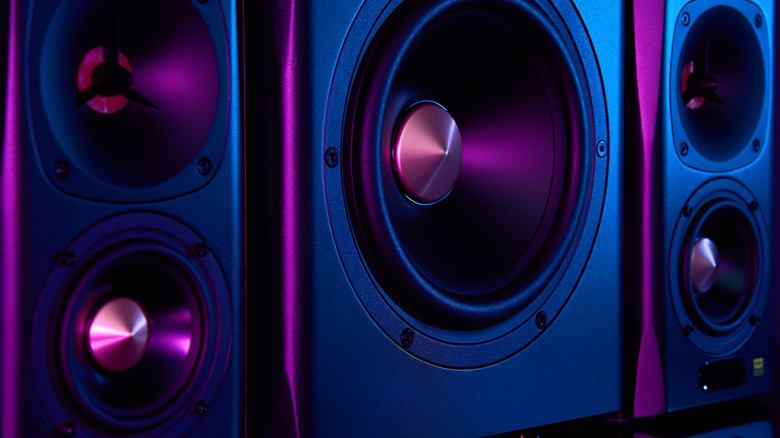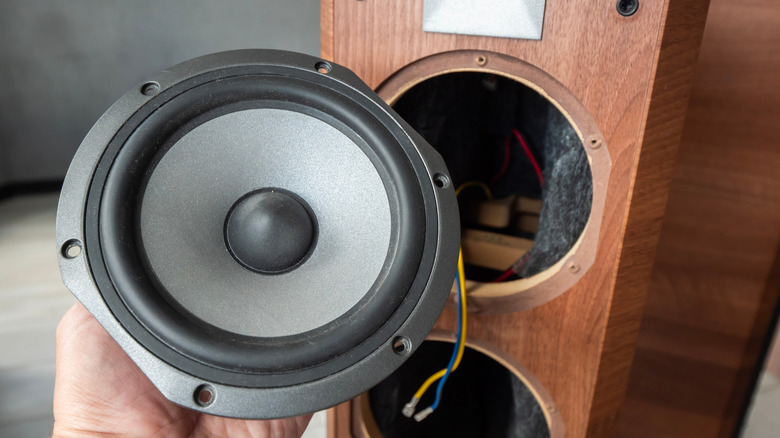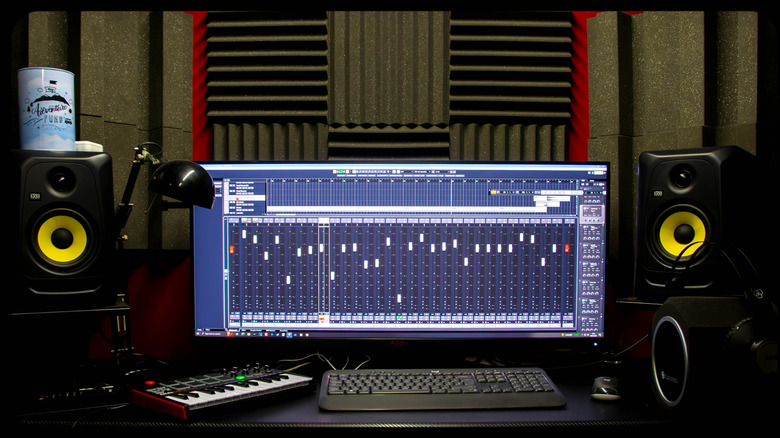Do You Really Need To 'Break In' New Audio Speakers?
When you take home a new device, it's natural to expect it to work best right out of the box. But some things get better with time and use. New shoes often feel uncomfortable until they've been worn in, and a smartphone attains its best battery life after it's had a few days or weeks to optimize itself. The same is said of speakers, and you'll often hear people with experience in the audio world talk about "breaking in" a new audio playback device, be it a loudspeaker, studio monitor, or one of the best bookshelf speakers.
Speaker break-in is also referred to as burn-in. Although it sounds a bit violent, it's actually an analytical and somewhat boring process. The idea is that putting the speakers through their paces for an extended period of time will help their parts to settle and loosen up, eventually leading to better sounding audio. Some may claim speaker break-in is a myth, but the general consensus among experts is that break-in can make a real difference, however small. Some of the most reputable companies in the audio space concur, and manufacturers from Klipsch to Yamaha recommend burning in new speakers. So, here's why you need to break your speakers in, and how to do so properly without damaging them.
All speakers have a break-in period before they sound best
Speakers, from the best Bluetooth speakers to the most expensive loudspeakers for studios and theaters, require a break-in period to sound their best. The reason for this is that speakers have moving parts. Sound is made of waves moving through the air, and a speaker works by converting electrical impulses into vibrations that produce sound waves. To do so, speakers contain two crucial components called a coil and diaphragm. The coil is made of metal wire, and sits inside of a magnetic field. As it receives electrical audio signals, it moves back and forth at high speed. The coil is connected to the diaphragm, which is a conical piece of thin material visible on the front of the speaker. Mounted in place with another component called a surround, the diaphragm vibrates as the coil moves. Altogether, this system is referred to as a driver. When a speaker is brand-new and unused, these components can be a bit stiff.
Think of it like a pair of new shoes, which can feel stiff and uncomfortable until you wear them for a few weeks and the leather softens, allowing for more flexibility and a fuller range of motion. The process a speaker undergoes during burn-in is remarkably similar. As a new speaker plays audio, the constant vibration loosens up the suspension system the driver is mounted in, as well as some of its connection points. After this process, the speaker should have a fuller range of expression. If you're a musician or audio engineer using one of the best studio monitors, or just an average music lover, you'll probably notice at least some difference after the burn-in.
How to break your speakers in safely
Some suggest breaking in a new speaker helps it to sound its best, so let's discuss what the process of doing so entails. Depending on your preferences and priorities, there are several ways to burn a speaker in. Most audio experts will recommend a dedicated break-in session during which you play audio through the speakers for an extended period of time. Some say 40 hours, others say 100, but the exact length of time will be different for each speaker. Don't worry, you can leave the speaker alone and do other things during this time. It's a bad idea to expose your ears to music for such a long time, anyway.
Not just any audio will do when breaking a speaker in. Think of it like a stretch before a workout, where your goal is to target all of the muscles you plan on using. Similarly, you should break a speaker in with songs or audio tracks that have high dynamic range (meaning they have both loud and quiet parts) and which contain frequencies across the audio spectrum, from low end bass to high end treble. There are specialized break-in tracks available for online download, but you can also search Spotify or another streaming service for break-in playlists. If you feel comfortable, you can also use your own music. It's also a good idea to play a song you know extremely well both before and after the break-in process, in order to understand how the break-in affected the speaker. Don't crank the volume up too high during the burn-in process, as this can damage the drivers. Aim for a moderate volume.


